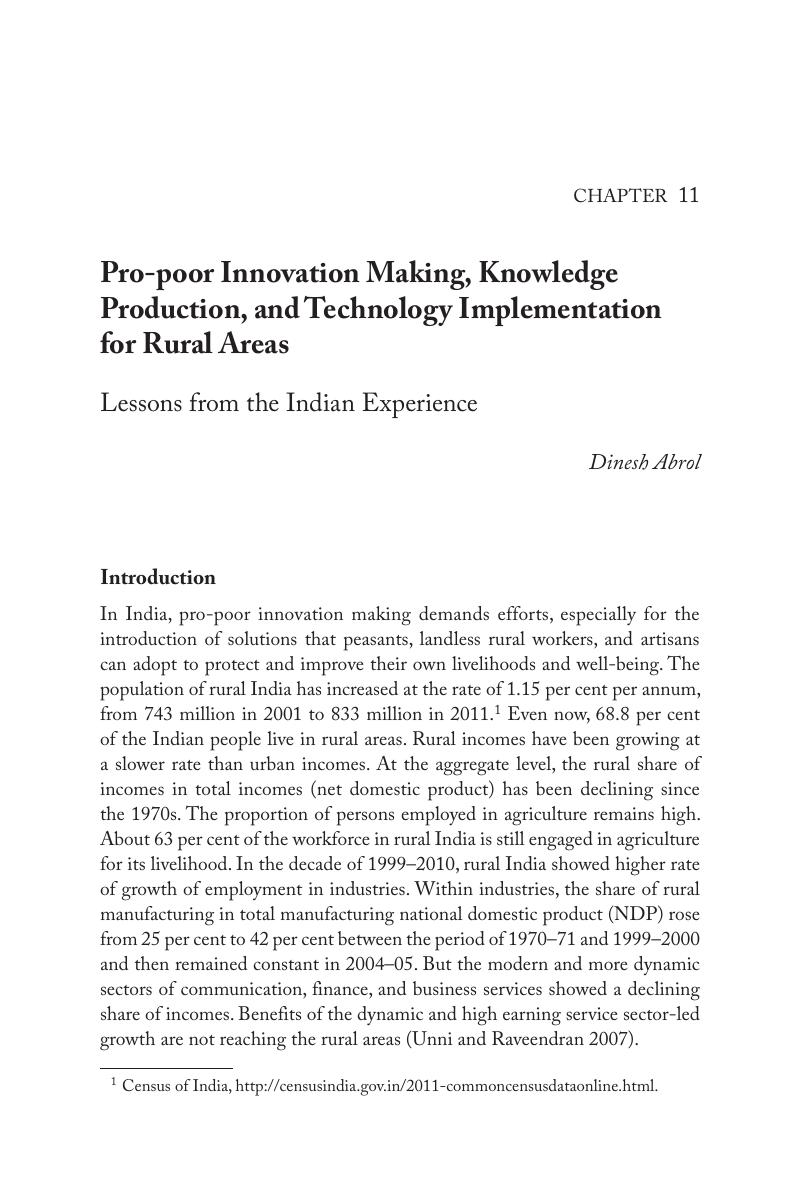Book contents
- InnovationinIndia
- Copyright page
- Dedication
- Contents
- List of Figures
- List of Tables
- Prologue
- Chapter 1 Innovation in India
- I Setting the background
- II Sectoral studies
- III Innovations for inclusive development
- Chapter 9 Evolution of Traditional Medical Systems Sector in India
- Chapter 10 Where is the Toilet Please?
- Chapter 11 Pro-poor Innovation Making, Knowledge Production, and Technology Implementation for Rural Areas
- Chapter 12 Concluding Remarks*
- Contributors
- Index
- References
Chapter 11 - Pro-poor Innovation Making, Knowledge Production, and Technology Implementation for Rural Areas
Lessons from the Indian Experience
from III - Innovations for inclusive development
Published online by Cambridge University Press: 05 July 2014
- InnovationinIndia
- Copyright page
- Dedication
- Contents
- List of Figures
- List of Tables
- Prologue
- Chapter 1 Innovation in India
- I Setting the background
- II Sectoral studies
- III Innovations for inclusive development
- Chapter 9 Evolution of Traditional Medical Systems Sector in India
- Chapter 10 Where is the Toilet Please?
- Chapter 11 Pro-poor Innovation Making, Knowledge Production, and Technology Implementation for Rural Areas
- Chapter 12 Concluding Remarks*
- Contributors
- Index
- References
Summary

- Type
- Chapter
- Information
- Innovation in IndiaCombining Economic Growth with Inclusive Development, pp. 338 - 379Publisher: Cambridge University PressPrint publication year: 2014
References
Select Bibliography
- 6
- Cited by



